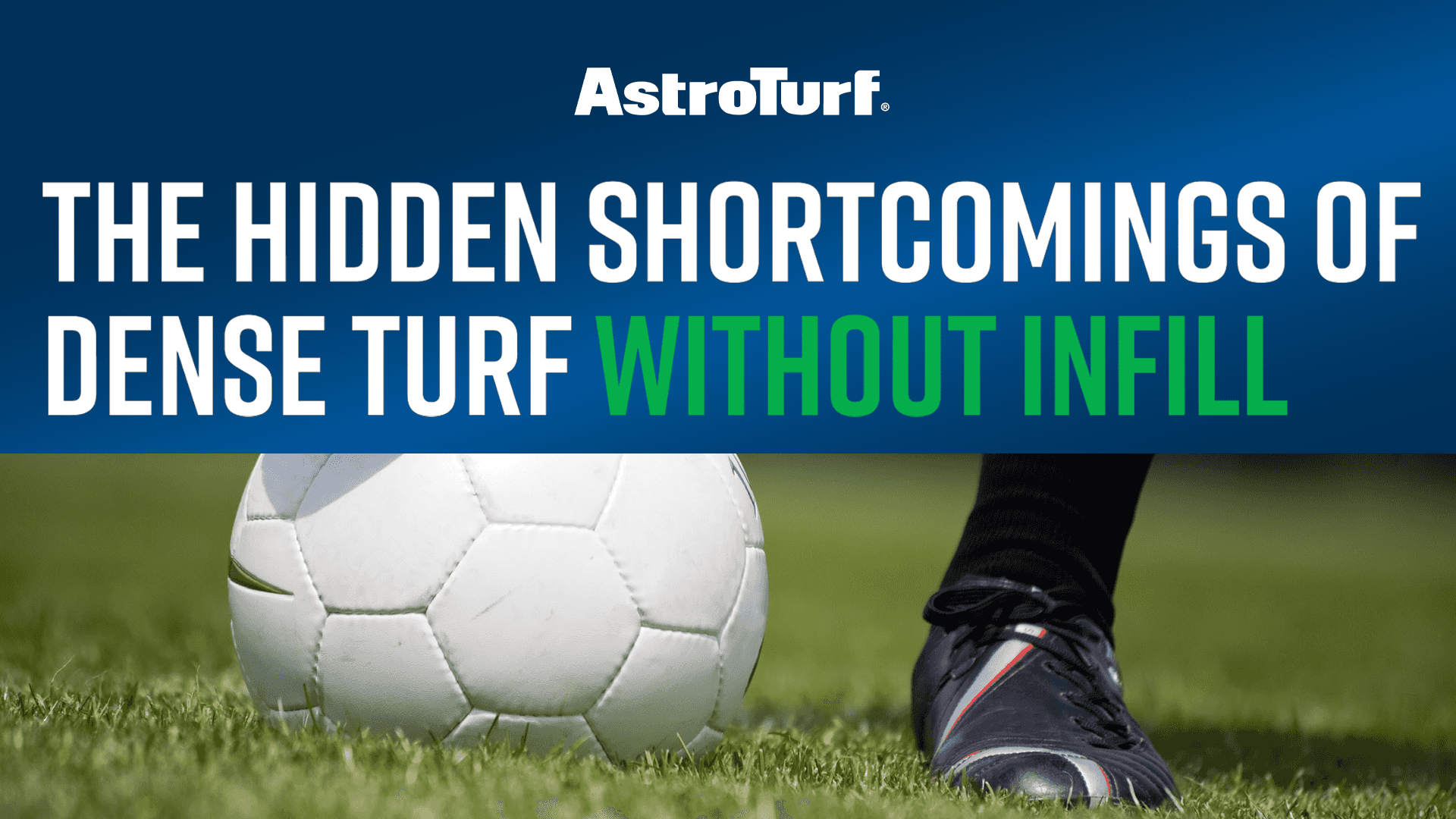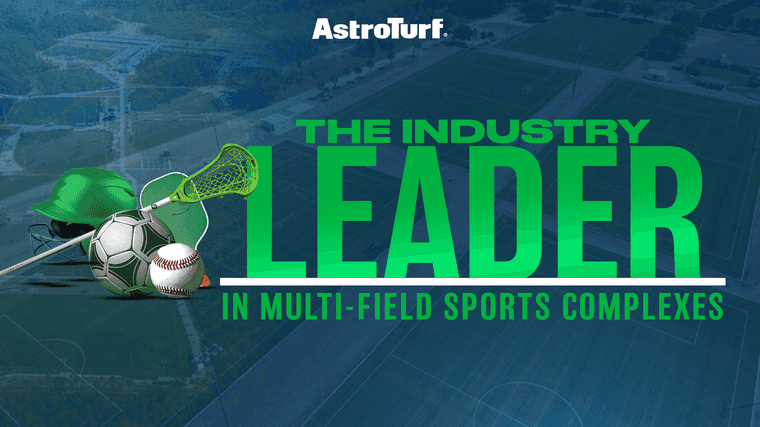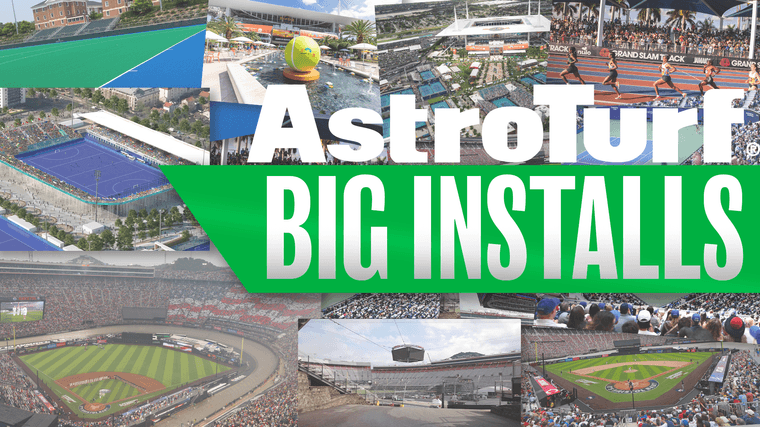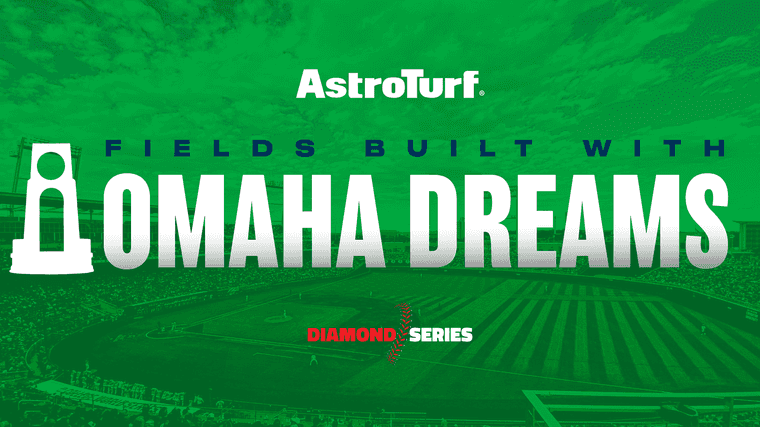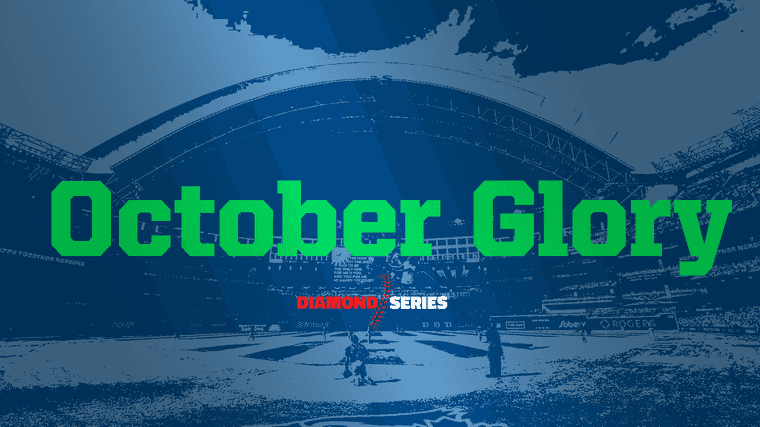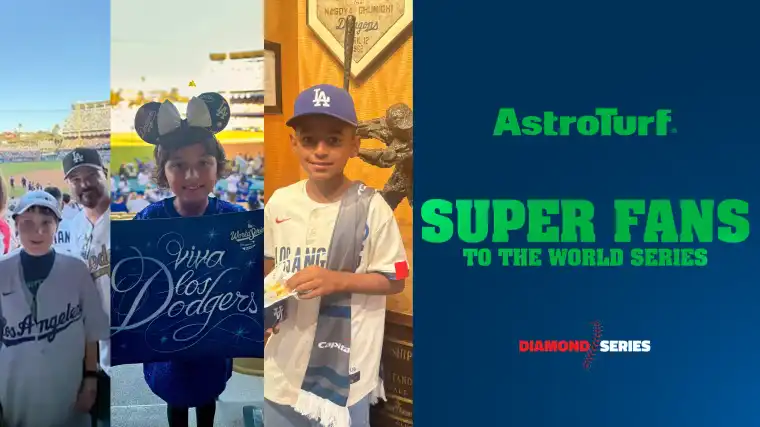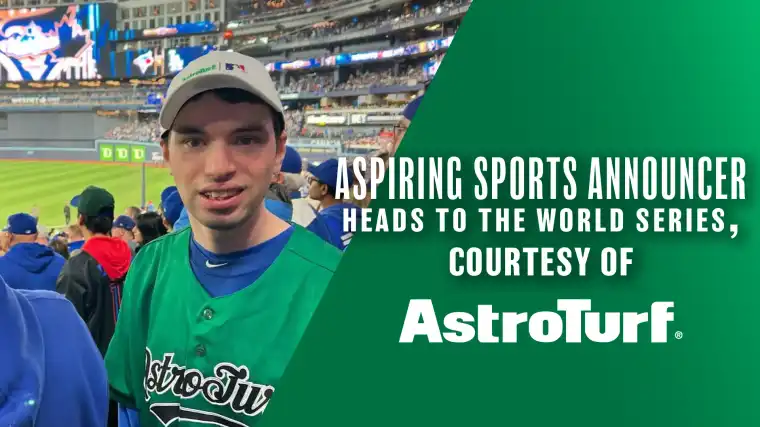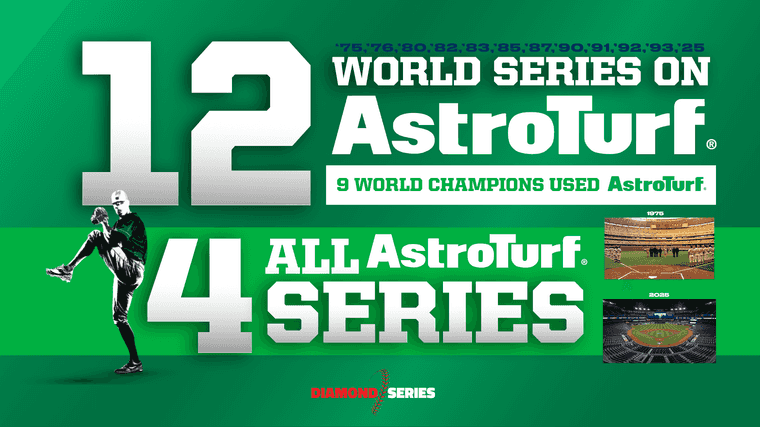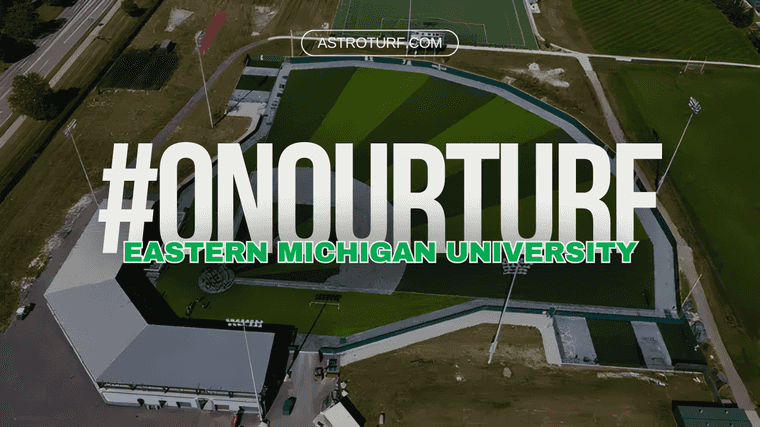Why Experience and Proven Performance Matter in Synthetic Turf Design
In the constant evolution of synthetic turf, many companies have revisited the concept of dense, non-infilled systems, often marketing them as “low maintenance” or “next generation.” But at AstroTurf®, we’ve already been down that road. We developed, tested, and installed these systems years ago. What we learned through experience, observation, and athlete feedback has shaped how we design every field today.
Our conclusion is clear: dense turf without infill cannot deliver the long-term consistency, safety, or performance that athletes and facilities demand.
____________________________________________________________________________________________________________________________________________________________________
Lessons from the Original Innovators
AstroTurf pioneered dense, non-infilled systems with our Golden Series DT product. We studied its entire lifecycle from the first installation through years of real-world play. Initially, the system looked impressive, but over time, it became evident that these fields could not maintain the performance and feel of a true athletic surface.
That’s why we moved on. We stopped producing dense, non-infilled systems and shifted our focus toward engineered solutions that balance fiber density with performance infill — systems designed to emulate the responsiveness of a perfectly groomed natural grass field.
____________________________________________________________________________________________________________________________________________________________________
The Truth Behind the “Innovation”
Many dense turf systems being promoted today aren’t new innovations at all. They’re reimagined landscape turf products designed for decorative or light-use applications, not for high-intensity sports. Most major manufacturers can produce them, but that doesn’t make them fit for performance.
The reality is simple: these are old ideas with familiar problems, dressed up as cutting-edge technology.
____________________________________________________________________________________________________________________________________________________________________
Performance Decline Over Time
Through years of observation and customer feedback, we’ve identified several consistent issues that emerge as dense, non-infilled fields age:
· Compromised Traction: As fibers flatten and mat, surfaces become slick, reducing grip and predictability.
· Directional Variance: Athletes experience different traction depending on movement direction due to the turf’s grain pattern.
· Harder Impacts: Without infill to separate and cushion fibers, the surface compacts and hardens, increasing joint stress.
· Aesthetic Degradation: The once-upright appearance fades, leaving the surface matted and less visually appealing.
These aren’t theoretical issues – they’re documented outcomes from real installations observed over time.
____________________________________________________________________________________________________________________________________________________________________
The Inevitable Fix: Add Infill
The only reliable way to restore traction and shock absorption to dense turf is to add infill – the very component those systems claim to eliminate. But when you do, the surface becomes heavy, overly compact, and loses its intended characteristics.
In the end, the “solution” defeats the original purpose.
____________________________________________________________________________________________________________________________________________________________________
What It Means for Real-World Use
Dense, non-infilled turf may work for low-traffic recreational spaces or community areas. But when it comes to athletic performance, consistency, and player safety it falls short. These systems simply change too much with age and use.
Even warranties can be misleading. A 12-year warranty sounds impressive until you read the fine print and realize coverage may not begin until 50% of the fibers are gone and long after the surface has lost its performance value.
____________________________________________________________________________________________________________________________________________________________________
Why AstroTurf® RootZone® Stands Apart
At AstroTurf, we don’t speculate — we innovate from experience. Our history with dense, non-infilled turf gave us the knowledge to lead with something far better. The AstroTurf RootZone System delivers the ideal balance of fiber structure, infill, and underlayment to create a field that looks, feels, and performs like elite natural grass.
Each RootZone surface is designed to:
· Maintain consistent traction and safe footing through years of play
· Deliver true ball roll and response across every sport
· Provide long-term durability with reduced maintenance needs
· Offer predictable performance game after game, season after season
That’s why elite programs, schools, and professional organizations continue to choose AstroTurf. When you want a surface that performs today and for years to come, trust the team that’s been innovating synthetic turf for over half a century.
AstroTurf — Where Experience Shapes Innovation.
